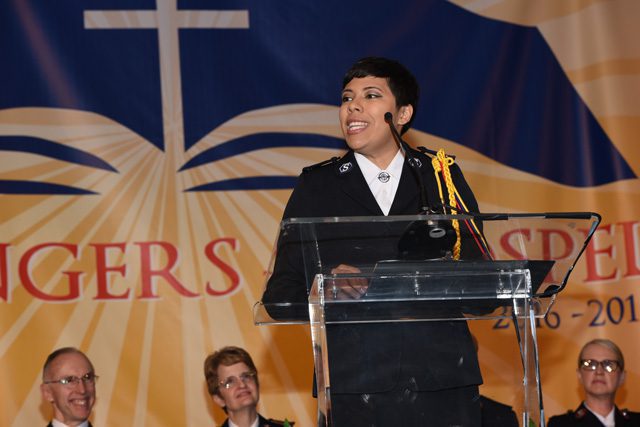TSA asked by state to handle financial assistance and casa management.
A Salvation Army volunteer surveys the remains of the I-35W bridge.
Within moments of the Minneapolis bridge collapse, three Salvation Army Emergency Disaster Services (EDS) vehicles (canteens) and 15 volunteers were at the scene of the tragedy. The I-35W bridge collapsed on Aug. 1 during rush hour.
The canteens remained throughout the night, providing food and water, donated by Cub Foods, for relief workers and survivors. In addition, Salvation Army officers and volunteers trained in Critical Incident Stress Management offered emotional and spiritual care.
In the days following the tragedy, The Salvation Army served approximately 800 people including many federal, state and local workers. As of Aug. 7, one canteen remained stationed near the disaster site. The Army also served meals and offered emotional and spiritual care to survivors and family members at the Family Assistance Center. The Salvation Army is dedicated to providing aid as long as necessary.
Long-term needs
In addition to short-term relief, the state of Minn. asked The Salvation Army to provide financial assistance and head up social service case management to those people directly affected by the bridge collapse. Assistance will include money for funerals, medical bills and other unexpected costs caused by the tragedy.
By Aug. 8, The Salvation Army in the Twin Cities (Minneapolis and St. Paul) had raised nearly $40,000 for such assistance. The largest donation, $25,000, came from Target Corporation. Mail and online donations provided an additional $7,000. Volunteer bell ringers raised $5,600.
The Salvation Army is grateful to partners like Cub Foods, Target and Macys who provided supplies for the relief effort and to the many individuals who gave generously.
Personal accounts
Captain Adam Moore, who leads the Army’s work in Fargo, N.D., witnessed the collapse. He was about a half mile south of the bridge.
“This is why The Salvation Army exists,” said Moore. “We help people make sense of tragedy and help them put the pieces back together.”
Even closer was Salvation Army employee Dave Scharnhorst, who was just about the last car off the bridge before it collapsed into the Mississippi River. Scharnhorst works as an IT specialist at the Army’s divisional headquarters in Roseville, Minn.
He was only two car lengths away from serious injury or death. Although he could have driven off and not looked back, he chose to drive to level ground and then get out to see how he could help. He was able to help calm the woman who had been driving in the car behind him when the bridge collapsed.
He explained: “It was easy for me to see the whole disaster and become overwhelmed. But I knew God’s call was not for me to fix the whole disaster, but to do what I can, where I am.
“I wasn’t one of the heroes that pulled people out of the wrecked cars, or climbed down to the river to assist other survivors. I really only helped one person. But that one person needed me. I think God knew I needed a specific focus for my attention.
“Now I’m living life much more for today. I’m not worried about tomorrow as much (Matt. 6:34). I found out how much trouble today can be.
“I now know how blessed I am to have such wonderful friends and family. And the support of my co-workers at The Salvation Army has been tremendous.”
For Scharnhorst’s complete story, visit www.thesalarmy.org/enewsletter/August07/scharnhorst.htm.
Monetary donations may be sent to your local Salvation Army earmarked “Disaster Relief,” made online at www.salvationarmyusa.org or by calling 1-800-SAL-ARMY.









